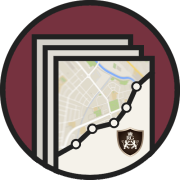For lots of individuals, thinking about planning for their retirement can be put off simply because they do not know where to begin. Building on this notion, many individuals do not even know how much money that they currently have access to, or what funds they will be able to draw from in the future.
In regards to finding out how much money you currently have that could be put towards your retirement, you simply need to add up all of your assets – cash, expensive items like jewelry, properties you own, investments, etc. There are a few exceptions to what you should add up. You’ll need to exclude money you’ll be using in the immediate future (perhaps for a vacation), money set aside for emergencies, or money set aside for something like a college fund for your child. Additionally, leave off Social Security, pensions, etc – this income won’t come until the future, so it’s not a current asset (however, any money you have in a 401(k) should get counted). Figuring out this estimation should be your first step towards planning your retirement.
Once you’ve jotted all of your assets down and added them up, you might run into some nice surprises. Not only will this number likely be a little higher than expected, but you’ll be better prepared to see how you can use your current assets to make your money grow. The next step is simple on paper, but it might difficult psychologically – You need to stop worrying, and start planning. Once you sit down and have real numbers to work with, you’ll be better prepared to plan on what to do. Nearly half of people polled in an EBRI survey from 2011 indicated that once they had sat down to plan things out, they changed their retirement strategies. You’ll need to potentially make two turbo tax support strategies, especially if you’re a woman. You’ll want to create a strategy as a couple if you’re married, but also one as a single person. If you’re spouse dies, there is a likelihood that there will be a loss of benefits, so you’ll need to financially prepare.
Next, you can take your estimation of your current assets and predict how much it will be worth in the ten to fifteen years between now and your retirement. If you’re planning even before this, that’s great – but you’ll just need to adjust your estimation. Sure, this is will produce a very inexact, rough figure, but it will certainly be a workable number that you can use to plan ahead. You’ll need to grab figures based on your return on investments, annual interest on savings accounts, etc. While it is true that some of these numbers can be unpredictable due to outside factors like the state of the economy, some will be more straight ahead, such as fixed income investments like bonds that have a fixed interest rate. Higher return rates on various investments will generally involve more risk, and you’ll want to keep this in mind when doing your planning.
Next time, we’ll look at a couple ways you can diversify your investments to yield a greater return, as well as how you should factor in money you’ll have access to in the future to plan for your retirement.

